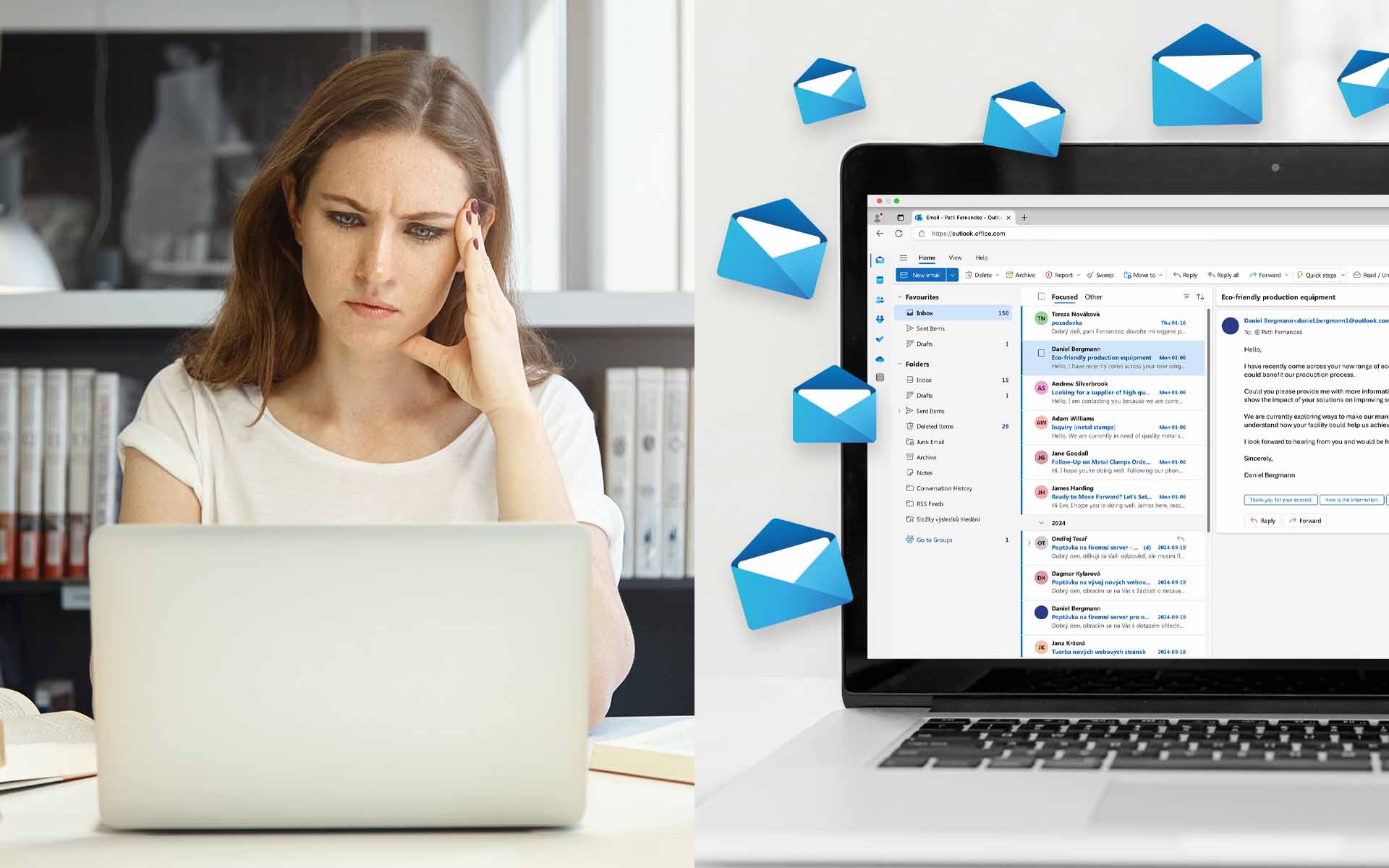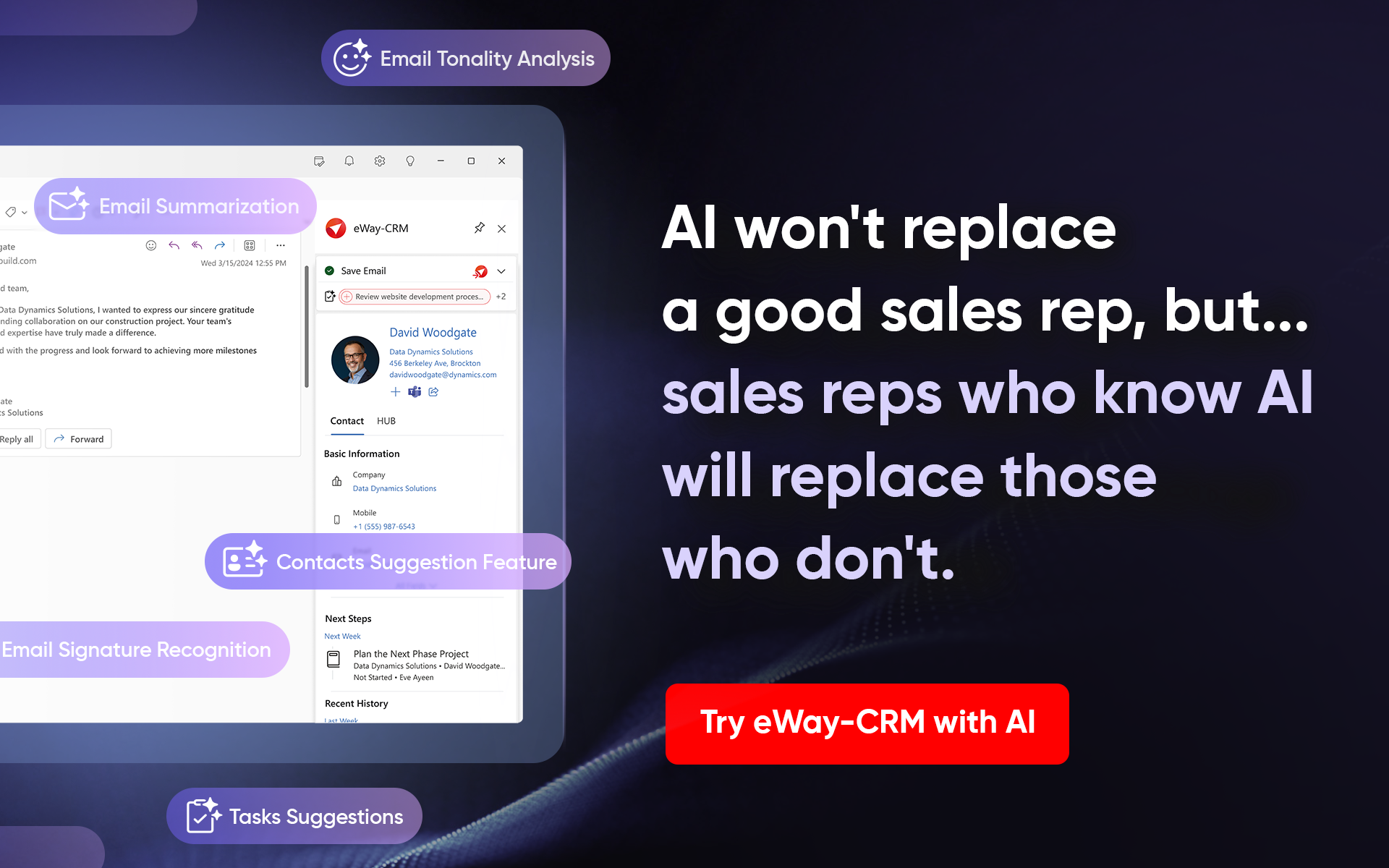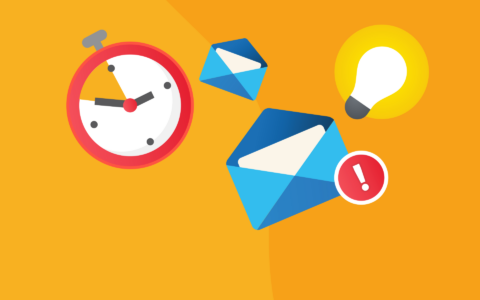Emails are still the main business communication. And it's not going to change any time soon. So, if you struggle with the so-called email stress or inbox anxiety, you should start working on inbox management before it catches up with you.

Email anxiety, a phenomenon that impacts productivity, mental health, and overall well-being. As quickly as it can start burning, it can also be put out. What exactly is it and why should you pay attention to your email inbox management?
Table of contents
What Is Email Stress
How Many Emails Is Too Many
Do I Experience Email Stress
Psychological and Physical Impacts of Email Overload
Cultural and Behavioral Contributions to Email Stress
Strategic Approaches to Managing Email Stress
Long-Term Strategies for Reducing Email Stress
Say No to "One More Email"
What Is Email Stress
Email stress or email anxiety is a form of psychological strain caused by managing a large volume of emails. And the demand to respond to them as quickly as possible.
Why do so many of us suffer from it? Because we feel the need to stay connected. And often, we are forced to.
How Many Emails Is Too Many
Let's look at numbers and estimates for a moment.
Each of us checks our emails around 15 times a day. And each check takes us around 15 to 25 minutes. That means mailbox management takes us about half of the standard working day. That's a lot of time.
So how do I know if I'm under an overload of emails?
Some say that the maximum is 100 emails per workday. However, there is no exact number I could answer this question with. You have to trust your gut. And listen to your feelings.
If you feel uncomfortable and anxious about even 80 emails, that means that your email ceiling is 80 emails.
Do I Experience Email Stress
If you feel that each unanswered email is a ticking time bomb and struggle with email handling. Plus, feel anxious and emotionally involved in managing your inbox, you most probably experience email stress.
Being emotionally involved means you feel overwhelmed by your work emails.
You are worried about responding to emails immediately and find it difficult to stop checking your inbox.
Ask yourself right now: Do I feel anxious at work? Distracted? And not satisfied with my job? When I see my inbox, are there too many emails? And am I tired of these too many emails?
When feeling rather unwell, you know email stress is something you should definitely focus on.

Psychological and Physical Impacts of Email Overload
The constant barrage of emails can lead to cognitive overload. Simply put, the brain is bombarded with more information than it can process effectively.
This state can deteriorate one’s ability to make decisions and prioritize tasks. Potentially leading to decreased job performance and personal dissatisfaction.
The issue here is that these negative feelings don't have to stay in the office. After some time, they can enter your personal life. And as you can guess, effects of uncontrolled stress might be devastating.
As the American Psychological Association explains, a stressful work environment can contribute to problems such as headaches, eating issues, sleep disturbances, and difficulty concentrating. This leads to chronic stress, which can result in anxiety, insomnia, high blood pressure, and a weakened immune system. In serious cases, it can result in depression and other major health issues.
Cultural and Behavioral Contributions to Email Stress
Workplace culture plays a significant role in the development of email anxiety and stress caused by email clutter.
Environments that valorize rapid responses and constant availability at specific times can higher your stress levels.
And the "always-on" mentality can further intensify this anxiety. Which then makes it difficult for you to disconnect and recharge - components that are essential for a healthy work-life balance.
Strategic Approaches to Managing Email Stress
Email stress relief comes with good inbox organization and better communication with your leaders. Be it your boss or manager.
The best way how to do this is to incorporate both psychological techniques and practical tools:
Priorities and organization: Prioritize so you always stay on top. And organize your inbox so you don't lose track of important emails. Among the email management best practices at work belongs, at least for me, the "inbox zero" technique. It'll help you to keep your inbox clean and organized so you can enjoy better mental clarity.
Other email management best practices are creating folders, tagging your messages, and using filters. But there are many more. See our tutorials if you're an Outlook user.
Tools and automation: Tools, such as CRM, belong to the best inbox stress solutions. Why? They'll do the work for you.
Thanks to the automation, you'll be able to get rid of routine tasks. And with smart features, you'll have free hands, to make more steps in less time. Nowadays, they're often powered with AI, which promises smoother and more effective work with your inbox.
Behavior and boundaries: Setting clear boundaries is a must here. Talk to your manager or boss about how to deal with emails. And try to find ways that will help you to better control your inbox and prevent being frustrated with email organization.
Practices such as not checking email after work hours or during weekends can help to have a healthier work-life balance. To help this, agree to turn the email notifications off during your free time.
Long-Term Strategies for Reducing Email Stress
Resilience towards stress is probably something we all want. And prevention is the best thing we can do in order to keep ourselves happy and calm. So how to cope with email stress? And how to reduce it effectively?
Practice these long-term strategies:
- Mindfulness and stress reduction techniques:
- Mindful breathing: This technique involves focusing only on your breath. The inhalation and exhalation help to anchor in the present moment and forget about anything that triggers you. A huge advantage is that you can do it anywhere and anytime. And it takes only a few minutes.
- Body scan meditation: This involves a slow, focused scan of your body. From head to toe. Noticing any sensations, tensions, or discomfort. The goal here is not to change these sensations. But to become aware of them. This will help you to connect yourself to the physical experience. And reduce the intensity of stress coming from your thoughts.
- Guided visualization: In this technique, you engage your imagination to visualize a peaceful and calming place. Often, it's a meadow or forest. This practice can lead to a state of deep relaxation. And helps you to distance yourself from immediate stressors.
- Workplace culture change: Advocating for a shift in workplace culture can have a profound impact. This includes setting realistic expectations for email response times. Encouraging more direct forms of communication when appropriate. And promoting a culture that values quality over quantity.
- Education and training: This might sound odd, but training on effective email management techniques can help a lot. Many people don't know how to take good care of their email account. So, any smart mail management tip is valuable.
Ask for workshops on time management and digital detox sessions. And training in marketing emails, its tools and even phone calls. All can equip you with the skills needed to combat email overload.
Say No to "One More Email"
Stop with "I'll just take care of one more email". This doesn't lead anywhere. Only to more working hours and more stress.
Set priorities, focus on the important messages and master email management. And if you feel stress in your body and head, do the exercises I recommended.
Hopefully, I was able to help you.












